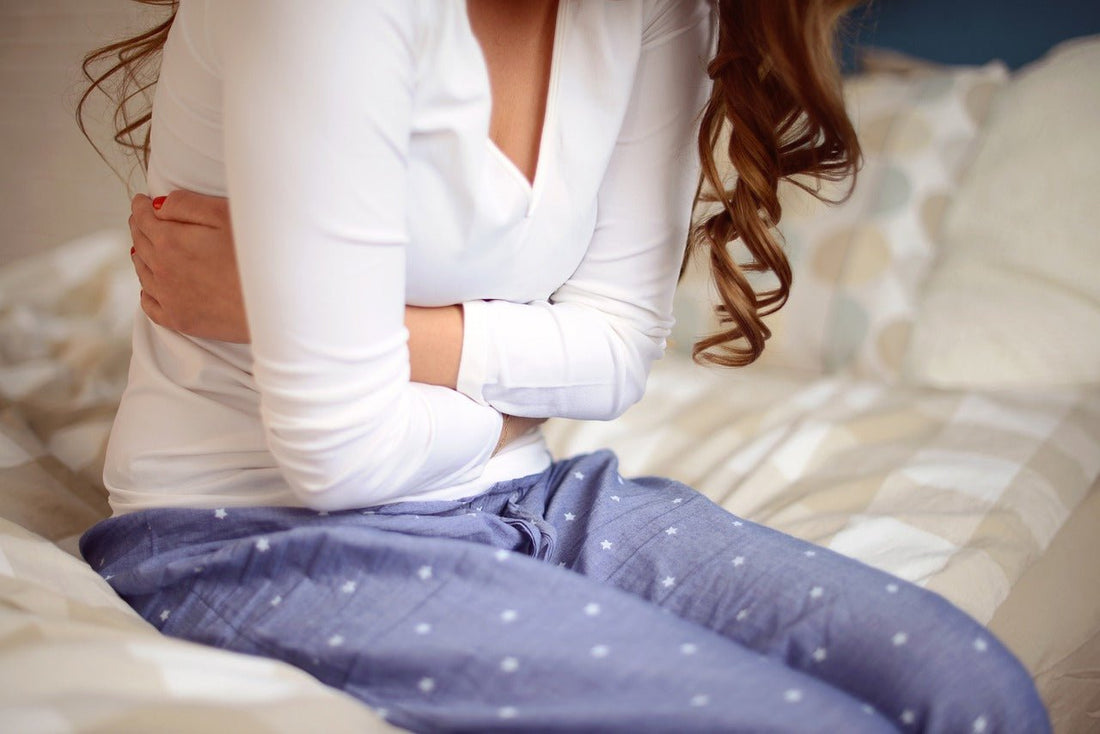Education
Selenium
Selenium is a trace mineral in the human diet. There is also little knowledge in society about the impact of this element on human health. It is definitely not as popular as magnesium or zinc, although it is equally necessary in our diet. Humanity became aware of the existence of selenium over two centuries ago, when it was isolated by the Swedish chemist Jacob Brezelius. What more do we know about him now? First of all, it is an essential component of enzymes involved in oxidation-reduction processes and cytochrome, thanks to which it protects cell membranes, and therefore the cells themselves, against oxidative stress. Hence its beneficial effect on the immune system. People suffering from any thyroid disorder have certainly come across information about its key role in the metabolism of this gland's hormones. The problem of male infertility allowed us to draw attention to the role of selenium in proper spermatogenesis, where this ingredient is necessary for the formation of sperm with proper structure and the desired motility. Less known properties of selenium include its influence on the proper functioning of the muscular system, including the heart muscle. They are so important that in regions of the world exposed to extreme deficiencies of this element, we are dealing with a specific cardiomyopathy (Keshan disease). We will also find information confirming the impact on the low birth weight of newborns whose mothers were deficient in this microelement. There are interesting reports about the effect of selenium on the nervous system, where deficiencies manifest themselves in mood declines. And finally, related to the antioxidant effect, it influences the development/inhibition of some cancer diseases, e.g. prostate, lung or colon cancer. Selenium deficiency may manifest itself through: - hair loss and brittle nails, - nervous system disorders (low mood, depression), - fatigue, - weakness of skeletal muscles and heart muscle, - weakened immunity, - thyroid abnormalities, - male fertility disorders. Where to look for selenium? The element is taken from the soil by plants, which become food for herbivorous animals. Theoretically, both animal and plant food can be its source. Foods recommended for deficiencies are most often: offal (kidneys), eggs, dairy products, sea fish, mushrooms, garlic and Brazil nuts. The latter, generally considered to be the richest source, obviously do not come from our region, and when buying them we may not be 100% sure whether they actually come from areas rich in this element. In practice, in Polish latitude, we deal with low selenium content in the soil, which results from the geographical location. The rocks from which the soil is formed in our native areas are very low in selenium. Additionally, the acidic nature of these soils makes it difficult for plants to absorb the said mineral. Supplementation may be the solution to replenish the deficiencies. The preparations available on the market include both organic forms (l-selenomethionine) and inorganic forms, e.g. sodium selenate. The daily recommended intake of selenium for adults is 55 mcg. However, supplements may contain a dose almost four times higher, up to 200 mcg. When supplementing selenium, it is worth remembering that it is a trace element for humans, which means that there is a small difference between a therapeutic and toxic dose. Therefore, despite potential deficiencies, when deciding on supplementation, it should be used very carefully, in accordance with the dictum of Paracelsus Everything is poison and nothing is poison. Only the dose makes a substance not a poison. Marta Wcześniak BIBLIOGRAPHY: Piotrowska "Content of selenium in cultivated soils of Poland", Roczniki Gleboznaczne T XXXX, No. 1, Warsaw 1984 Golonko, B. Matejczyk "Two faces of selenium, selected aspects of the biological activity of selenium" Civil and Environmental Engineering 9 (2018) Ratajczak, M. Gietka-Czemel "The role of Selenium in the human body" Advances in Medical Sciences 2016 XXXIX(12) Resolution No. 7/2021 of the Team for Dietary Supplements of 28/10/2021
Learn moreAre French fries and chips a health hazard?
Fried foods, especially those based on carbohydrate products, are an integral part of our diet. However, more and more research indicates that the frying process may produce acrylamide - a chemical compound that may pose a risk to human health. In this article, we will explore the health effects of acrylamide, the products in which it is present, and present medical sources that confirm this risk. Organizations such as the International Agency for Research on Cancer (IARC) and the World Health Organization (WHO) have classified acrylamide as a carcinogen. What is acrylamide? Acrylamide is a chemical compound produced in the process of thermal processing of carbohydrate products, such as potatoes, French fries, bread, as well as coffee and some cereal products. It is produced by the reaction of amino acids with sugars in the presence of high temperature. High concentrations of acrylamide can be found in burnt or heavily browned foods. Where is acrylamide found? Primarily in carbohydrate products subjected to high temperatures during frying or baking. Examples of products include: French fries, chips, potato pancakes, bread, cookies, roasted coffee. Acrylamide in research Scientific research and assessments by health institutions clearly emphasize the potential danger associated with acrylamide. If possible, it is worth limiting the consumption of heavily burnt or roasted foods to minimize the risk of exposure to this carcinogenic substance. Deep frying carbohydrate products, although providing culinary pleasure, leads to the formation of acrylamide, a substance harmful to human health. To reduce the risk, it is worth choosing less burnt and more delicately prepared foods. Marta Wcześniak Medical Sources and Research: EFSA (European Food Safety Authority). (2015). EFSA statement on the presence of acrylamide in food. Tareke, E., Rydberg, P., Karlsson, P., Eriksson, S., & Törnqvist, M. (2002). Acrylamide: a cooking carcinogen? National Cancer Institute. (2020). Acrylamide and Cancer Risk. National Toxicology Program. (2021). Report on Carcinogens, 15th Edition.
Learn morePainkillers and health
Year by year, sales statistics of painkillers increase, according to many of them, in recent years by up to 250%! Pain is an inherent part of the human experience, and pain medications are often the first choice for relieving symptoms. However, their excessive and regular use may have adverse consequences for human health. It is worth understanding the different types of painkillers, their potential side effects and the causes of pain in order to approach the topic responsibly. Types of Painkillers: NSAIDs (non-steroidal anti-inflammatory drugs): Examples are ibuprofen, diclofenac. They have anti-inflammatory and analgesic effects by inhibiting enzymes responsible for inflammation. They may cause gastrointestinal problems. SIDE EFFECTS: May cause gastrointestinal problems, ulceration, bleeding. Paracetamol: Has an analgesic and antipyretic effect. Its excess can damage the liver. SIDE EFFECTS: Too high a dose or given for too long may damage the liver. Opioids: Strong painkillers such as morphine or oxycodone. They can lead to addiction and have a depressing effect on the respiratory system. SIDE EFFECTS: Risk of addiction, respiratory depression, drowsiness. DON'T IGNORE THE PAIN! Pain can be a signal from the body that something is wrong. Pain symptoms in the head, joints, spine or abdomen may be caused by various reasons, such as injuries, infections, chronic diseases or improper habits. Ignoring pain can worsen your condition and delay proper diagnosis. DO YOU EXPERIENCE PAIN REGULARLY? Consult a doctor - pain is intense, frequent or persistent, it is worth consulting a doctor to rule out serious health problems. ATTENTION! Don't overuse painkillers: Use medications only as directed by your doctor or as directed on the package. Adopt healthy habits - a healthy diet, regular physical activity and avoiding stress can help reduce pain; in many cases, recurrent weakness, nausea or headaches result from DEHYDRATION or lack of adequate food during the day. Remember that a healthy approach to pain involves recognizing its cause, not just masking the symptoms with painkillers. When in doubt, it is always a good idea to consult your doctor to ensure that you receive appropriate medical care. Mata Wcześniak Bibliography: American Heart Association. (2020). Nonsteroidal Anti-Inflammatory Drugs (NSAIDs). National Institute on Drug Abuse. (2020). Opioids. Mayo Clinic. (2021). Pain Medications: Prescription pain relievers, OTC pain relievers and topical products. Harvard Health Publishing. (2019). The hazards of too much acetaminophen. Mayo Clinic. (2021). Pain Management: Pain basics. Harvard Health Publishing. (2020). When Pain Relievers Cause More Headaches.
Learn moreVitamin D and cancer
Vitamin D, as we know, is converted in the body to its active (hormonal) form (calcitriol). This hormone binds to a specific receptor (VDR) that transports it into the cell nucleus. There , it regulates over 300 genes . The deficiency of vitamin D3 is a modern global health problem. Hundreds of studies have proven over the last 20 years that the importance of vitamin D3 goes far beyond the metabolism of calcium and phosphorus. The deficiency of this vitamin is an important factor for coronary heart disease, hypertension, stroke, diabetes, multiple sclerosis, rheumatoid arthritis, irritable bowel diseases, chronic pain and even psychiatric problems. Later, research articles were published that emphasized the role of vitamin D3 deficiency in various malignancies, especially lung, colon, prostate, bladder, and breast cancer, as well as lymphoma. In one study of 25,871 patients, supplementation with vitamin D3 reduced the risk for metastatic cancer and death by 17%. The risk was reduced by as much as 38% if the patients also maintained a healthy weight 1 . Of a particular note, the participants received only 2,000 IU of vitamin D3 daily and did not measure its blood levels. Despite that, a significant benefit was still found. Other publications revealed even more striking effects. The study of 2018 showed that women having serum vitamin D3 level at or over 60 ng/mL (150 nmol/L) had an 82% lower risk of breast cancer compared to those in whom the levels were below 20 ng/mL (50 nmol /L) 2 . An UK study demonstrated that having a serum vitamin D3 level higher than 60 ng/mL resulted in an 83% lower breast cancer risk 3 . A meta-analysis of 70 studies in breast cancer found that, for each 2 ng/mL (5 nmol/L) increase in vitamin D3 level, there was a corresponding 6% decrease in the incidence of breast cancer 4 . There are plenty or similar research publications proving one simple fact: immunomodulatory power of vitamin D3 acts, beyond other aspects, as an efficient way of raising anti-cancer immunity. prof. Igor G. Bondarenko References Chandler PD et al. Effect of vitamin D3 supplements on development of advanced cancer: A secondary analysis of the VITAL randomized clinical trial. JAMA Network Open 2020; 3(11): e2025850. McDonnell SL et al. Breast cancer risk marked lower with serum 25-hydroxyvitamin D concentrations >60 vs < 20 ng/ml (150 vs 50 nmol/L): Pooled analysis of two randomized trials and a prospective cohort. PLoS ONE 2018, 13(6): e0199265 . Lowe LC et al. Plasma 25-hydroxy vitamin D concentrations, vitamin D receptor genotype and breast cancer risk in a UK Caucasian population. J Cancer 2005, 41(8): 1164-1169. Song D. et al. Vitamin D intake, blood vitamin D levels, and the risk of breast cancer: a dose-response meta-analysis of observational studies. Aging 2019; 11(24): 12708-12732.
Learn moreSleep disorders and their impact on the course and control of diabetes
Diabetes is a very common disease nowadays. It is called a civilization disease or a non-communicable epidemic of the 21st century. About 3 million people suffer from the disease in Poland, and approximately 440 million in the world, which translates into 1.6 million deaths annually due to it. The disease increases mortality but also deteriorates the quality of life. Diabetes that is improperly treated and poorly controlled causes very serious complications, mainly cardiac ones - more frequent heart attacks, strokes, atherosclerosis of arterial vessels, and, as a consequence of these changes, an increase in the number of lower limb amputations, cases of kidney failure, and diabetic retinopathy. Peripheral polyneuropathy is a very painful symptom, affecting mainly the feet and significantly worsening the patient's quality of life. Currently, an individual approach to a patient with diabetes is emphasized, because each case is different. Each patient struggles with diabetes at different stages and degrees of advancement, uses different antidiabetic drugs or insulin therapy, has a different lifestyle, work pattern, ability to perform physical activity or follow an appropriate diet, which is so important in diabetes. Despite increasingly better treatment methods, modern drugs and insulins, new insulin pumps and continuous glucose monitoring (CGM) systems, good diabetes control and avoiding hyper- or hypoglycemia are still influenced by many elements of the patient's daily life. Regularity, repetition, consistency of eating, working and resting times, avoiding excessive stress, worrying, living in a hurry, as well as the ability to get good and healthy sleep are very important. The latest diabetes recommendations of the PTD emphasize the role of sleep, its duration and quality on the course of diabetes. Sleep disorders affect diabetes in two ways. On the one hand, they worsen its balance, causing morning hyperglycemia, increased insulin resistance, and certain neurological disorders that persist during the day regarding concentration, memory, and emotion. On the other hand, diabetes, especially insulin therapy or traditional, older drugs such as sulfonylurea derivatives, generate glycemic disturbances at night and impair the quality of sleep. Sleep disorders in patients with diabetes and their adverse impact on health parameters The journal Diabetologia conducted a meta-analysis on the incidence of sleep disorders in type 2 diabetes and their impact on factors such as glycemic control, micro and macrovascular complications, depression, mortality and quality of life. The authors, based on the available literature in the PubMed database, asked the extent to which the treatment of sleep disorders in patients with type 2 diabetes can improve the mentioned health factors. The review included both observational and experimental studies. The results showed that insomnia (39%), obstructive sleep apnea (55-86%), and restless legs syndrome (8-45%) occurred more often than in the general population without diabetes. Moreover, it has been shown that sleep disorders have a significantly negative impact on glycemic control and increase the percentage of glycated hemoglobin HbA1c. The reason for the increase in glycemia after a bad night's sleep is believed to be an increase in the amount of stress hormones, mainly cortisol, which causes metabolic disorders, insulin resistance, slower metabolism, difficulty maintaining optimal body weight, and additional snacking at night or in the morning. Repeated sleepless nights increase your cardiovascular risk. It has been proven that people who sleep little have higher levels of CRP (acute phase protein), which causes a greater risk of inflammation, weakened immunity, a greater risk of obesity, diabetes, hypertension, depression, and cancer. Already the first sleepless night causes memory and concentration disorders, weakened reflexes and the ability to react, anticipate, make decisions and various emotional disorders. Each additional one increases the risk and intensity of the above-mentioned disorders. Such a person may have impaired driving skills, limited assessment of the consequences of actions and reduced foresight, which may contribute to an increased risk of road accidents or accidents at work. The body returns to full balance only after three consecutive nights of sleep. Treating sleep disorders may therefore play an important role in preventing the progression of diabetes. Conventional therapies such as weight loss, education, and cognitive behavioral therapy appear to be effective in improving sleep and health outcomes in patients with diabetes. Sleeping medications should only be used in more severe cases and for short periods of time. For this purpose, you can use herbal medicines that have a relaxing and sleep-inducing effect, as well as melatonin. In conclusion, it can be stated that because the treatment of sleep disorders can prevent deterioration of diabetes control, sleep disorders should be recognized and treated in patients with diabetes in order to ultimately improve health and quality of life. Diabetes and drug therapy as factors worsening sleep quality A diabetic patient using insulin therapy, especially intensive 3-4 injections a day, and also treated with an insulin pump or older generation drugs, such as sulfonylurea derivatives, is more exposed to fluctuations in glycemia at night, which may manifest as: Hyperglycemia, i.e. too high blood glucose level >180 mg, with symptoms of difficulty falling asleep, more frequent urination - nocturia and large amounts of urine excreted (polyuria), Hypoglycemia, i.e. too low glycemia level <70 mg/dl. It may cause waking up at night or waking up with heavy sweats, deterioration of sleep quality, problems with waking up, feeling tired, dull, and irritable during the day. To avoid these problems, you should choose the appropriate meal for dinner, especially the amount of carbohydrates in the meal, and adjust the appropriate dose of insulin depending on the glycemia before the meal, e.g. around 6:00 p.m., and basal insulin, usually administered around 10:00 p.m. Currently, with advanced devices for measuring CGM (Continuous glucose monitoring system), new insulin pumps with a hybrid system and closed loop, significant nocturnal hypo- or hyperglycemia is becoming less common, and patients have a better quality of life and avoid dangerous complications of diabetes. . To ensure comfortable sleep, remember the basic rules, such as the appropriate temperature in the bedroom (about 18 degrees Celsius), airing the room, properly selecting a sleeping pillow and mattress, and using headbands or earplugs. In the evening, it is important to turn off multimedia and avoid intense exercise late at night. It is worth remembering about fixed sleep times and avoiding shift work at night. To sum up, detecting and treating sleep disorders is not usually part of standard patient care in a diabetes office, which is often due to the time limit of such a visit, but drawing attention to this problem in the doctor's office and ensuring the patient's good sleep contributes significantly to improving diabetes control. , and sometimes to prevent it and reduce the risk of other diseases and health problems mentioned in this article. Krzysztof Chabros Diabetologist specialist Literature: Urszula Cieślik-Guerra, Sleep disorders as a risk factor for type 2 diabetes, " Fam Med Prim Care Rev11.3 (2009), pp. 574-576. Clinical recommendations for the management of patients with diabetes 2022. Position of the Polish Diabetes Association. Current Topics in Diabetes, 2022;2 (1) p. 26.
Learn moreThe role of a dietitian in pre- and post-cancer care
People with experience of cancer are a special group of patients who require therapeutic support from various specialists. Among them, a complementary but important role is played by a DIETITIC who, working with the sick person, will support the patient's treatment and recovery process, strive to improve the quality of his life and avoid recurrence in the future. Nutrition education The basic role of a dietitian in pre-cancer care is nutritional education aimed at explaining the relationship between the diet, quantity, quality and type of products consumed as well as the food preparation technique used and the risk of developing lifestyle diseases, including cancer. The dietitian will explain step by step what the assumptions of the anti-cancer diet are, indicate the optimal energy and macronutrient value of the diet, teach how to compose meals, verify the need for supplementation and, above all, answer the patient's questions. It will also motivate you to improve your eating habits. Depending on the dietitian's work model and the patient's needs, each specialist will conduct education slightly differently, using various tools, such as: a nutritional plan, a list of recommendations, a table facilitating the selection of products, or even accompanying people while shopping for food products. Taking a holistic approach to cancer prevention into account, the dietitian will pay attention to other lifestyle elements: such as physical activity, avoiding stimulants, working on stress control and "good sleep". Identification of nutritional status abnormalities A person's nutritional status affects both the risk of developing cancer and the final outcome of their treatment. On the one hand, excessive body weight, especially abdominal obesity, significantly increases the risk of cancer, and on the other, it is observed that many patients struggle with malnutrition already at the time of diagnosis of cancer. Epidemiological observations show that poor nutritional status of a patient worsens his response and tolerance to treatment, accelerates the development of complications, impairs fitness and negatively affects the quality of life and chances of survival. It is estimated that in up to 20% of patients, the direct cause of death is not cancer, but the resulting malnutrition. Therefore, one of the basic activities that a dietitian performs during a visit to the office is to assess the patient's nutritional status. It can be done using various methods: weighing and measuring the patient, analyzing his laboratory test results or conducting a detailed interview. Dietitians usually use specialized weight and body composition analyzers in their work, operating on the principle of bioelectrical impedance or air plethysmography. These analyzes are non-invasive, easy to perform and applicable to most patients, and provide information not only about body weight, but above all about the estimated amount of muscle mass, water, fat tissue, protein and minerals that make up the body. Monitoring changes in these components over time allows you to better control your nutritional status and select diet therapy. Although the measurement of body circumference does not reflect its composition, due to its simplicity, it is usually performed as a complement to the patient's anthropometric assessment. Improper nutritional status is not only about too low or high body weight. This is also a situation in which nutritional deficiencies are observed - these will be verified by a dietitian both on the basis of blood tests and by conducting a health and nutritional interview. ATTENTION!!! A dietitian is not authorized to make a diagnosis. His analysis of medical records and laboratory test results serves to properly plan dietary therapy. However, if the dietitian notices anything disturbing in the patient's test results, he will definitely refer him to an appropriate specialist. Development of a personalized diet therapy plan The key element of cooperation between a dietitian and a patient with experience of cancer is to specify the assumptions of the diet and, in situations requiring it, to balance the menu. Before developing a diet therapy plan, the dietitian conducts an extensive interview with the patient, asking him about various aspects of eating. He asks questions about the amount and type of food products that the patient usually eats, as well as issues related to meal preparation, time of consumption, preferences and organizational possibilities. Based on the nutritional interview, it is easier for the dietitian to personalize recommendations or menus, identify incorrect eating habits and prioritize the order in which they should be changed. Usually, the nutritional interview is preceded by questions about the occurrence of chronic diseases (current and past), disorders, abnormalities in laboratory tests, medications and supplements taken. Information about allergies or observed food intolerances is also important. Based on the health interview, the dietitian not only makes a decision regarding the assumptions of diet therapy, but also tries to predict what possible problems, e.g. nutrient deficiencies, gastrointestinal ailments, the patient may encounter in connection with the undertaken/completed treatment. The dietitian will also assess whether a given person is able to meet the demand for calories and other nutrients in a traditional way (with conventional meals). If it is determined that the patient cannot eat sufficient amounts of food, the dietitian will help select the optimal nutritional preparation (so-called medical nutrition, oral food supplements). Help in the fight against ailments and side effects of treatment Most patients undergoing chemotherapy, radiotherapy or surgery experience ailments that significantly impair their daily functioning, affect their diet, and thus increase the risk of malnutrition. These may include primarily: - nausea, vomiting, - bowel rhythm disturbances, - loss of appetite, - pain when swallowing or swallowing problems, - change in the sense of taste and smell, - decreased amount of saliva produced, dry mouth, - food intolerances, - metabolic disorders. The role of a dietitian is to help in selecting food products that will be best tolerated in a given situation and to provide education on techniques for dealing with ailments. Due to the fact that therapeutic diets are often associated by patients with visually and tasteless meals, many specialists devote a lot of attention to convincing the patient (and his family) to experiment in the kitchen, test new recipes and pay attention to the appearance and form of serving the dish. The role of a dietitian is also to support and motivate patients throughout the entire period of introducing changes to their diet. Małgorzata Moszak Literature: Muscaritoli M, Arends J, Bachmann P, Baracos V, Barthelemy N, Bertz H, Bozzetti F, Hütterer E, Isenring E, Kaasa S, Krznaric Z, Laird B, Larsson M, Laviano A, Mühlebach S, Oldervoll L, Ravasco P , Solheim TS, Strasser F, de van der Schueren M, Preiser JC, Bischoff SC. ESPEN practical guideline: Clinical nutrition in cancer. Clin Nutr. 2021 May;40(5):2898-2913. doi: 10.1016/j.clnu.2021.02.005. Beirer, A. Malnutrition and cancer, diagnosis and treatment. memo 14 , 168–173 (2021). https://doi.org/10.1007/s12254-020-00672-3
Learn moreThe importance of screening tests in detecting digestive system cancers
Digestive system cancers pose a serious threat to the health and life of patients around the world. Their early detection is crucial for effective treatment and improved prognosis. In this article, we will discuss the importance of screening tests in detecting digestive system cancers and present the most important screening methods used in medical practice. Screening tests aim to detect cancers at an early stage, when they do not cause symptoms or are non-specific. Thanks to this, there is a greater chance of effective treatment and improving the patient's prognosis. Here are some of the most important screening tests used to detect digestive system cancers: Colonoscopy One of the most effective screening tests for detecting colorectal cancer. It involves inserting a flexible endoscope through the anus, which allows visualization of the interior of the large intestine. During the examination, polyps can be detected, which can lead to colon cancer. If found, they may be removed during examination or samples taken for further histological evaluation. Test for the presence of occult blood in stool This test examines a stool sample for the presence of blood, which cannot be seen with the naked eye. The presence of occult blood may indicate the presence of polyps or tumors in the large intestine. A positive test result usually requires further diagnostics, such as a colonoscopy. Gastroscopy This is a test that allows visualization of the inside of the esophagus, stomach and upper section of the small intestine using a flexible endoscope inserted through the esophagus. Gastroscopy can help detect, for example, stomach cancer. During the examination, tissue samples may also be taken for further histological evaluation and biopsy specimens may be tested for Helicobacter pylori infection. Imaging examination Imaging such as computed tomography (CT) and magnetic resonance imaging (MRI) may be used to detect digestive system cancers such as pancreatic cancer. These techniques enable accurate visualization of internal organs and can help identify tumors, assess their size and distribution. The above imaging tests are accurate and objective, but their availability is limited. A more common solution is an ultrasound examination, which, although its accuracy depends on the skill of the person performing it, can serve as a preliminary screening test before qualifying for CT or MRI. Screening is recommended for people at increased risk of developing digestive system cancers, such as those with a family history of cancer, existing risk factors, or certain symptoms. Regular screening can help detect cancer at an early stage, which in turn increases the chance of effective treatment and improved prognosis. Therefore, it is clear that screening tests play a key role in detecting digestive system cancers at an early stage. Methods such as colonoscopy, fecal occult blood test, gastroscopy and imaging enable the identification of cancer lesions and polyps, which enables early treatment. People at increased risk should get screened regularly as recommended by their doctor. Public education and awareness of the importance of screening are crucial for the prevention and early detection of digestive system cancers. Adam Trzciński
Learn moreThe role of endoscopy in the diagnosis and treatment of gastrointestinal cancer
Gastrointestinal cancers constitute a serious health problem worldwide. Diagnosing them is extremely important to detect the disease early and provide patients with appropriate treatment. Nowadays, endoscopy plays a key role in the detection and treatment of gastrointestinal cancers. In this article, I will discuss the role of endoscopy in these areas from the perspective of a gastroenterologist. Endoscopy is a non-invasive diagnostic technique that allows direct viewing of the inside of the digestive tract. Using a flexible speculum (endoscope), the doctor can view the mucous membrane of the esophagus, stomach, small and large intestine. If cancer is suspected, endoscopy allows visualization of the tumor, assessment of its location, size, shape and characteristic features. Additionally, during endoscopy, tissue samples (biopsies) can be taken for histopathological examination, which allows confirming or excluding the presence of cancer. Endoscopy can also be used to detect pre-cancerous lesions, such as colon polyps, which can develop into full-fledged cancers. Removing these lesions during endoscopy (polypectomy) can prevent the development of cancer. Additionally, endoscopy can be used to assess the extent of the tumor and assess the infiltration into adjacent tissues and lymph nodes, which is necessary when planning treatment. Endoscopy also plays an important role in the treatment of gastrointestinal cancers. In some cases, when the cancer is early and limited to the mucosa or submucosa, it can be removed using endoscopic techniques. For example, for early-stage colorectal cancer, endoscopic techniques such as endoscopic submucosal resection (ESD) may be used. These procedures allow the tumor to be removed without the need for open surgery. Additionally, endoscopy can be used to insert prostheses to unblock narrowed sections of the digestive tract caused by developing cancer. These prostheses enable the proper flow of food and alleviate symptoms such as swallowing difficulties. After treatment for gastrointestinal cancers, endoscopy plays an important role in monitoring patients. Regular endoscopic check-ups allow you to assess the effectiveness of treatment, check for disease recurrence and detect any recurrence or complications early. To sum up - endoscopy is an extremely important diagnostic and therapeutic technique in the case of gastrointestinal cancers. Thanks to it, it is possible to detect the disease earlier, more precisely assess the extent of the tumor and its characteristic features, and provide effective treatment. Gastroenterologists play a key role in performing endoscopy, interpreting the results, and making appropriate therapeutic decisions to improve the patient's condition and combat gastrointestinal cancers. Adam Trzciński
Learn more










